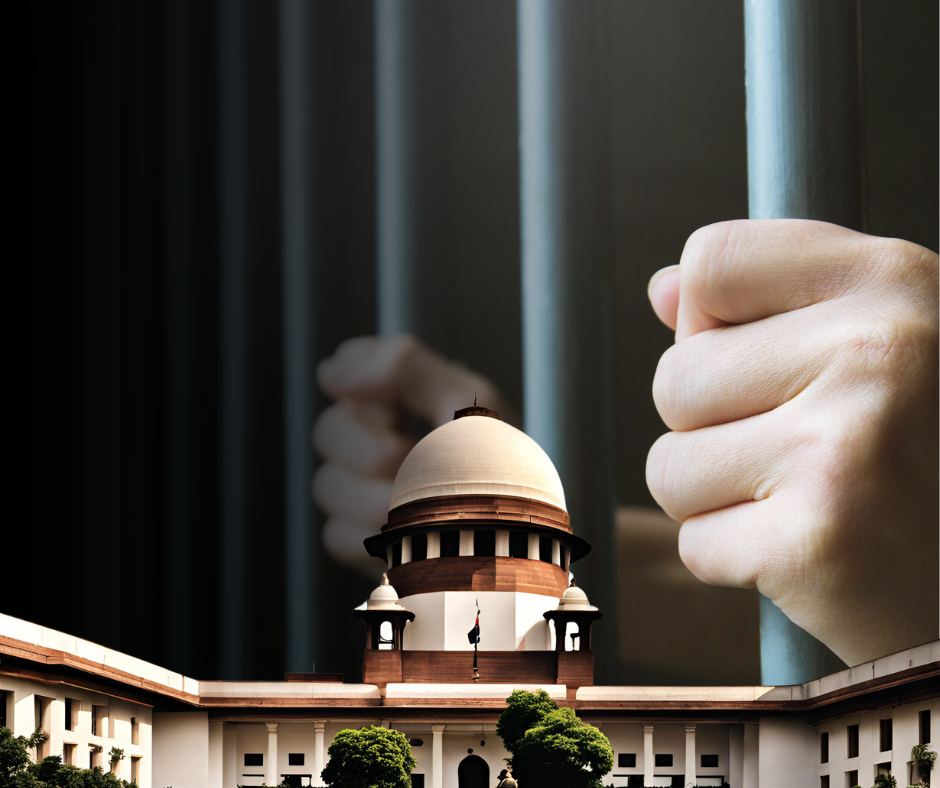This article explores the evolution of bail jurisprudence in PMLA cases following key Supreme Court rulings. It explores the balance between stringent law enforcement and individual liberties under the Prevention of Money Laundering Act, 2002.
Introduction
The Prevention of Money Laundering Act, 2002 (PMLA), has been a focal point in India’s fight against financial crimes. However, its stringent bail provisions under Section 45 have consistently raised concerns about the balance between effective law enforcement and the protection of individual liberty. A guiding principle in criminal law, “bail is the rule, and jail is the exception,” has been repeatedly upheld by the judiciary in response to these concerns. This article explores how the judiciary has navigated this tension in PMLA cases, focusing on key Supreme Court rulings and subsequent high court decisions that have clarified the scope of bail in such matters.
The Stringent Bail Regime under Section 45 PMLA
Section 45 of the PMLA imposes strict conditions on bail:
- The Public Prosecutor must have an opportunity to oppose the bail application.
- The court must be convinced that the accused is not guilty of the alleged offense and will not commit any further offenses while on bail.
These conditions effectively reverse the presumption of innocence, creating significant hurdles for securing bail. The Supreme Court in Nikesh Tarachand Shah v. Union of India (2017) struck down these provisions, declaring them unconstitutional for violating Articles 14 and 21 of the Constitution. However, the conditions were reintroduced in a modified form through legislative amendments, reviving the debate on the constitutionality of the PMLA’s bail framework.
Supreme Court Reaffirmation of “Bail is the Rule”
In Enforcement Directorate v. Vijay Madanlal Choudhary (2022), the Supreme Court reaffirmed the principle that “bail is the rule, and jail is the exception,” emphasizing that while the Prevention of Money Laundering Act (PMLA) has strict provisions to combat financial crimes, these must not infringe on personal liberty. The Court noted that lower courts’ hesitance to grant bail in serious economic offenses has led to increased pre-trial detentions. This principle has been further clarified in key cases, including Saumya Chaurasia v. Directorate of Enforcement (2024), where Justices Surya Kant, Dipankar Datta, and Ujjal Bhuyan stressed that Section 45 conditions should not automatically block bail, upholding Article 21 of the Constitution. Similarly, in Manish Sisodia v. Directorate of Enforcement (2024), Justice B.R. Gavai reinforced that pre-trial detention should not be punitive, especially when trials face delays. In Arvind Kejriwal v. Central Bureau of Investigation (2024), Justice Surya Kant reiterated that even in politically sensitive cases involving serious money laundering charges, courts must prioritize bail unless the prosecution clearly establishes a prima facie case.
High Court Rulings Reflecting a Shift in Bail Decisions
Recent high court decisions reflect the impact of these Supreme Court rulings and indicate a shift toward balancing individual rights with the stringent enforcement of PMLA:
- Nitesh Purohit v. Enforcement Directorate (2023): The Chhattisgarh High Court granted bail, citing insufficient evidence and emphasizing that continued detention would violate the accused’s right to liberty, especially in light of delayed trial proceedings.
- P. Anand v. Directorate of Enforcement (2022): The Madras High Court granted bail, recognizing that the accused played a marginal role in the alleged money laundering offense. The Court stressed that prolonged detention was unjustifiable without substantial evidence to support the allegations.
- Sanjay Pandey v. Directorate of Enforcement (2022): The Delhi High Court granted bail in a case related to the National Stock Exchange scam, underscoring that pre-trial detention should not be treated as a substitute for conviction when the trial is expected to be delayed.
These decisions reflect a growing judicial consensus that the PMLA’s strict bail provisions should not result in indefinite detention, particularly when there is insufficient evidence or unreasonable delays in trial proceedings.
Conclusion: Judicial Vigilance in Maintaining the Balance
The Supreme Court’s reiteration that “bail is the rule, and jail is the exception” has prompted lower courts to adopt a more measured approach in granting bail in PMLA cases. The reluctance of lower courts to grant bail under Section 45, as noted by the Supreme Court, has led to a series of rulings that aim to restore the balance between effective law enforcement and individual rights.
Recent high court decisions, influenced by landmark Supreme Court rulings, show a judicial trend toward ensuring that personal liberty is not unduly compromised in the enforcement of the PMLA. As financial crime cases continue to pose significant challenges, maintaining this balance will remain essential to upholding constitutional guarantees while ensuring that the law serves its intended purpose. The evolving jurisprudence in PMLA cases reflects the judiciary’s role as the guardian of personal liberty, even in the face of complex and serious financial crimes.
CONTRIBUTORS
Anubhav Singhal (Associate)
Divyanshu Dubey (Intern)






